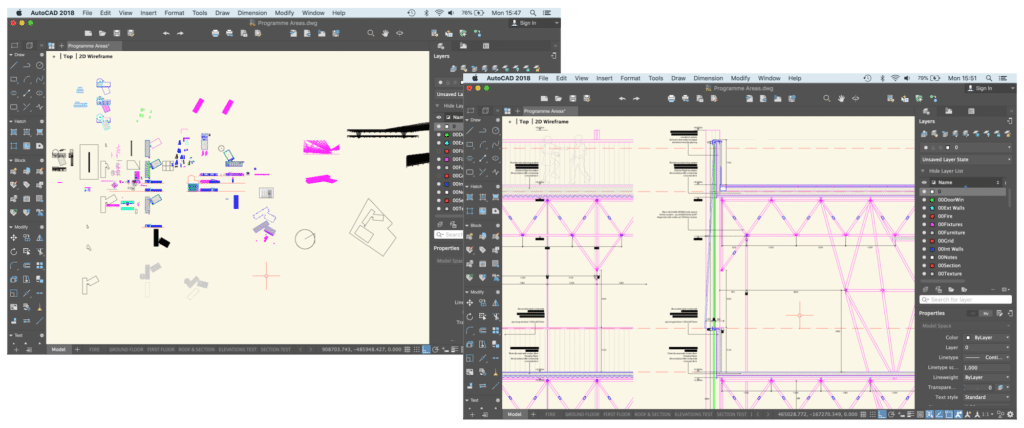Physical & Digital Drawing
When we use a Computer Aided Design (CAD) programme we invoke the act of drawing as we draw the mouse around on the desk. The cursor is drawn across the screen, albeit with a level of discontinuity as the lines of code convert the signals of the optical sensor into changes of colour on the LCD screen.

This has not always been the case, there was, for a time, an etymological disconnection. Architects were not ‘drawing’ but ‘constructing’ on the computer as the computer terminology was informed by building rather than draughting techniques. As well as the line tool in CAD software, there was originally the ‘snap’ tool. Before computer mice were developed for use with Computer Aided Design programmes, coordinates were used to describe the start and end points of a line. This was related to the act of building where a chalk line would be used by contractors to connect two points on a plane. The chalk line would then be ‘snapped’ to transfer the chalk from the line to the surface.

Mario Carpo’s distinction between mechanical (physical) drawings and digital drawings is the role of the author, and how this effects their final form. The mechanical object, a pencil or a pen, produces an object, a drawing. Whereas a computer produces a string of numbers, data, a digital file, which must then be transformed into an object ‘by other machines, applications or interfaces’.
Working physically and working digitally differ when thinking about the aspect of working at a scale. The infinite canvas of the computer allows users to draw entire cities, and wall build-ups, to the same level of detail, always working at 1:1. The ability to zoom in, to blow up a detail larger than real life, and then zoom out, showing the building on the whole. In one drawing the architect is allowed to skip to a highly developed model, while the idea of a building is still in a very abstract stage. Drawing on a page requires the architect to work at a scale, the drawing must be designed, thought out beforehand. And the architect must decide want they to show, all while confined to the dimensions of their desk.
Reuben Roberts is currently working for Eleanor Dodman Architects in East London.
This text was submitted in the short form category (≤ 350 words) of the Drawing Matter Writing Prize 2020.
